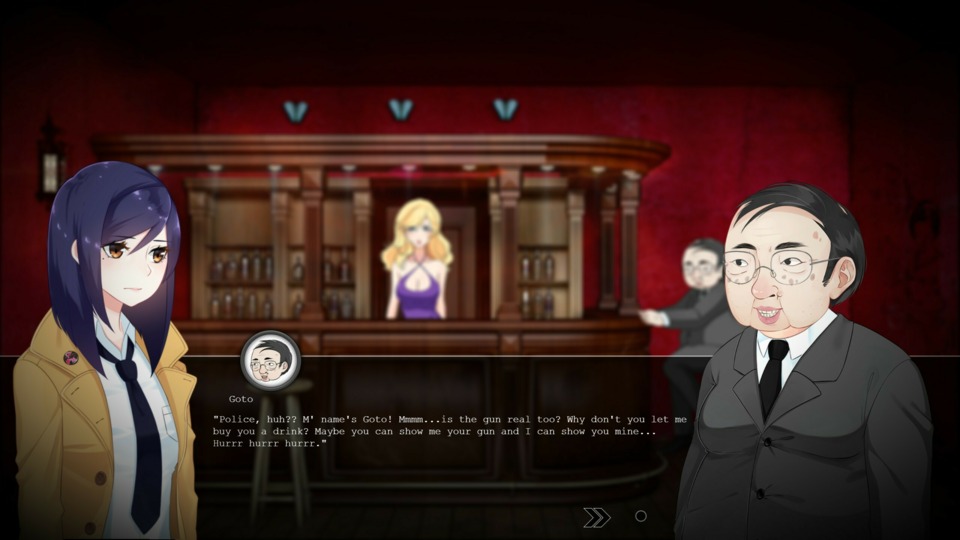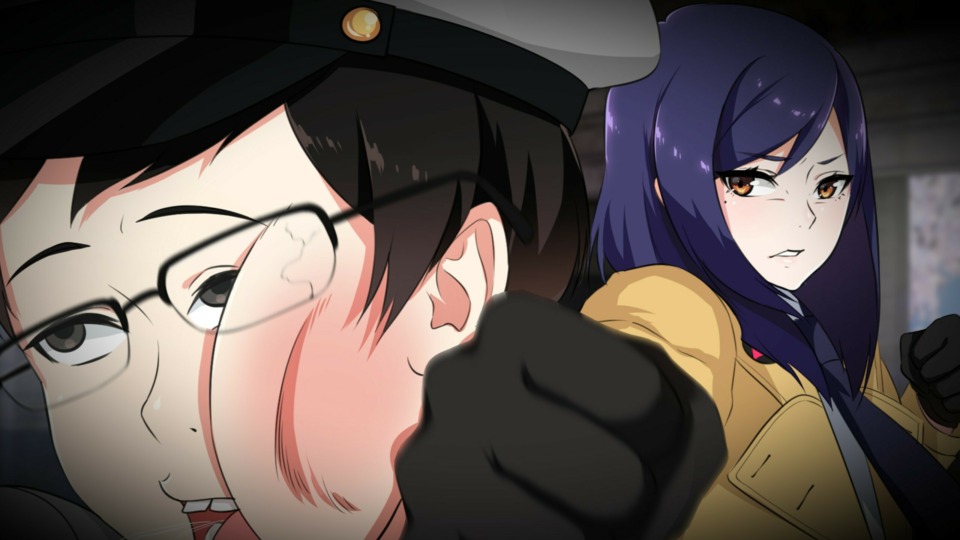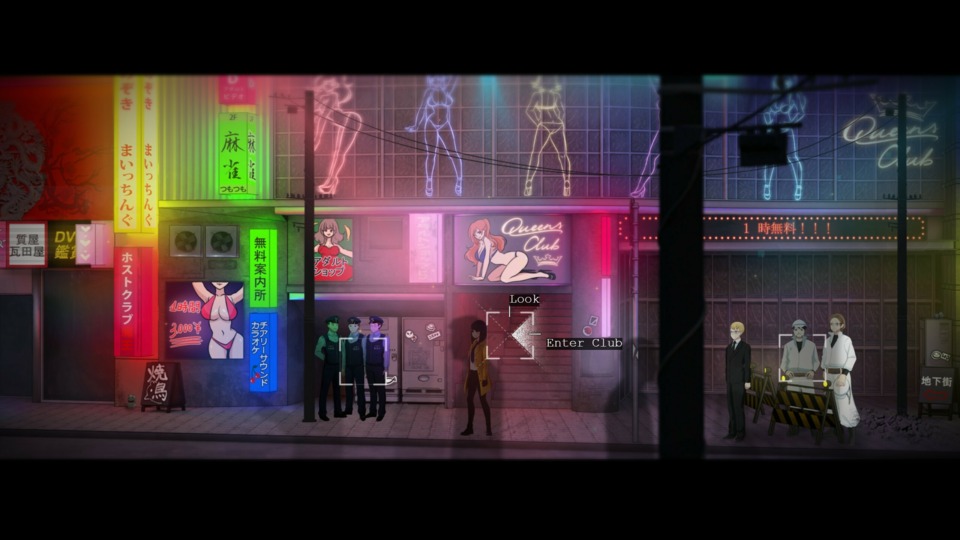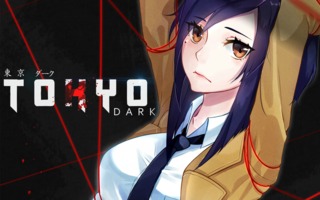A Japanese take on the modern Telltale game
I admit I’m ignorant of the Japanese indie scene. Basically whenever I think of a Japanese indie game, I think of either a game made with RPG Maker, a Visual Novel or a game made by a ridiculously talented person like Pixel with Cave Story. To my delight, Tokyo Dark is none of those things. Tokyo Dark is a psychological horror adventure game by Japanese indie team CherryMochi. It is a game based on the likes of a modern Telltale game but with an Anime aesthetic. Like the Telltale games, Tokyo Dark is heavy on dialogue and light on puzzle solving. And like those Telltale games, it openly boasts that “your decisions matter”. Unfortunately it fails to deliver on its initial promise especially after you play through the game again.

You play as Detective Itō Ayami, one of the few female detectives in the Tokyo Metropolitan Police department. Itō receives a call from the chief informing her that someone has seen her partner Tanaka, who has been missing for days, wandering the dark alleyways in Shinjuku. Itō eventually stumbles upon a sewer and finds her missing partner held at knifepoint by a familiar girl. It turns out that both Itō and Tanaka know this girl, she is the same girl that Itō shot and killed in a tragic accident 6 months ago. Fast forward to the present, the girl kills Tanaka and Itō suffers from a complete mental breakdown. When Itō regains her senses, no one believes her. Tanaka’s body is never found and no one could identify the girl that Itō clearly saw at the scene. Itō is forced to go on leave as the chief determines she is in no condition to continue working. It is up to Itō herself to figure out what happened to Tanaka’s body and why the girl she killed is still alive.

Instead of having a chart/list saving a list of decisions that Itō makes, the game mixes things up with what it dubs as the “SPIN” system. It’s a system that tracks Ayumi’s Sanity, Professionalism, Investigation and Neurosis stats. These stats are analogous to HP and MP bars in an RPG where each decision can positively or negatively affect these stats. The game doesn’t explain very clearly but having positive Sanity, Professionalism and Investigation is good while having a negative Neurosis stat is beneficial. To give an example of how the SPIN system works, an early decision Itō makes is whether to buy and drink a shot from the bartender. Doing so might aid in the investigation as the bartender is more likely to cooperate but damages your professionalism as you are drinking on the job. On paper it sounds like a great idea and motivates the player to make smart decisions to ensure that Itō’s SPIN meters are nice and healthy. In reality, the decisions break down into either doing something brash to quickly advance the story or take your time and go through more dialogue actions. I barely paid attention to the SPIN meters because by talking and interacting with every single person and object, I was able to easily maintain Itō’s SPIN stats. On my second playthrough, I had to deliberately go out of my way to do the most heinous things on multiple occasions in order to have a significant effect on the SPIN meters.

The presentation has noticeable highs and lows. The sound design is perfect. When Itō enters a stressful situation, the music swells and is extremely uncomfortable to listen to (in a good way). You will hear screeching and sounds of creepy child laughter. The rhythm of the music hastens to a frantic pace and you want Itō to get out of that situation as soon as possible. The art by this indie developed game is mostly pleasant. Portraits are well detailed and characters have multiple expressions. There are Anime cutscenes that are nice to look at too. They aren’t in high resolution but they bring a certain level of charm that reminds me of Anime in the 90’s. The 2D environmental artwork, especially the ones that dress the buildings in Akihabara and Kabukicho looks amateurish and out of place as if they belong in another game. The only animation present is Itō’s walking and running animation and they look terrible. Itō’s running animation looks like she is pacing around like a mannequin rather than like a person.
The game is relatively short clocking around 3-5 hours and even with its short length you can start noticing multiple faults with the game. Being a very text heavy game, it is surprising that the game lacks a chat log option. The middle chapter can be a bore with multiple instances of backtracking. There are also occasions where some objects can be seen as interactive but clicking on them does nothing, while there are other times where it doesn’t appear a choice is available but clicking on the empty space in the box triggers an action. There is a New Game+ where you can play through the game again and skip dialogue that you’ve seen before. The only problem is that about half of the repeated scenes can’t be skipped, making New Game+ runs frustrating.
Spoilers ahead…
Once you’ve played through Tokyo Dark in New Game+, you’ll immediately notice that most of your decisions don’t have any impact on the main story. You will see different dialogue and cutscenes, but the only time the game really diverges, is near the very end of the game. Fortunately the game does provide a save system in New Game+ called Broken Memories where you can iterate through multiple decisions to discover the different endings. Each ending helps fill in more details of what is actually going on and why Itō in New Game+ is slightly different from the Itō in the New Game. This trope of experiencing all the endings to come to a greater understanding is common in Visual Novels. I personally got so frustrated constantly playing through the same scenes over and over again that I gave up. Even if you are using a walkthrough, I think that it would take a minimum of 3 full New Game+ runs to see every possible ending.
Tokyo Dark filled me with anxiety and stress. Even though I had to guide Itō through several disturbing and difficult scenes, I still wanted to keep pushing to figure out the mystery behind her missing partner and the knife wielding girl. It’s on my second and third playthrough that the game’s magic disappeared. The same dreadful scenes played out and there was no option to skip them. Rather than being creeped out and disturbed, I was bored and constantly clicked my way through the same dialogue I’ve seen before. There were some nice surprises in my New Game+ runs but they were simply too sporadic to keep things interesting. I’m honestly mixed with Tokyo Dark, there is something special and worthplaying here, but only on a first playthrough.
